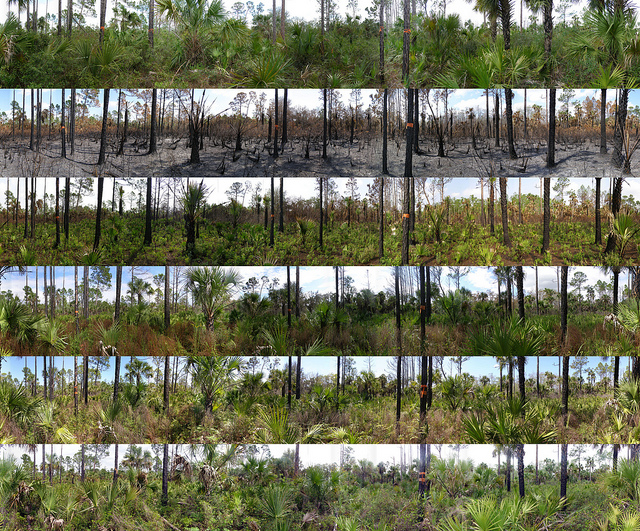 We’re on vacation, kayaking through mangroves near Naples, Florida. My nine-year-old is in the bow, paddling like crazy, splashing me with his enthusiasm. My husband and six-year-old glide nearby.
We’re on vacation, kayaking through mangroves near Naples, Florida. My nine-year-old is in the bow, paddling like crazy, splashing me with his enthusiasm. My husband and six-year-old glide nearby.
My view is limited. Tangled mangroves line the winding watery path, obscuring what’s within and beyond. I want to go slowly, to gaze at every statuesque ibis, egret, and cormorant, but the boys seek speed. Just as we reach a lagoon, I look up to see a twirling wisp of black, about the size of a cigarette, but lighter, like a feather. Then I see another, and another. Some different sizes, some fringed with white. They fall and rise with the wind until they land in the water and disintegrate.
The air is distinctly smoky, and these black bits are ashes. Ten miles inland a wildfire burns.
My phone tells me that people are being evacuated, that the fire is zero percent contained. It’s covering 3,500 acres and growing. I hope the people affected are okay. Should I be worried? Will the winds turn on us? Ashes float steadily down, get caught in my hair, land on my shirt, accumulate silently. Occasionally a whole charred leaf falls.
I don’t know Florida ecology well, but I wonder—aren’t fire and swampland incongruous? Is the land here even considered swampland? Is this fire the result of swamp-draining and land-drying? Is it evidence of climate change?
What are these charred remains? The carbon remnants of trees and other plants that pulled carbon dioxide out of the air in the process of photosynthesis and incorporated it into their tissues as sugars and other materials. Each carbon atom remains carbon but changes its attachments over time. As part of the fast carbon cycle, it moves on a timescale I can observe in my own lifetime. But if it enters the slow carbon cycle, if it sinks into the mangrove muck, it will move between rocks, soil, ocean, and atmosphere in 100 to 200 million years. Fast and slow, this carbon ash that floats and falls links me to both the near and distant past and future, a circular cycle that contrasts sharply with my linear, directional, Western mindset.
Safe at home in upstate New York, I called Reed Noss, a Florida fire expert, to learn more. Fires have been burning here for tens of millions of years, he told me. The ecosystem is adapted to it. It’s a natural part of the landscape, which is a mosaic of grassy, open pine savanna forests surrounding wet depressions in the limestone bedrock that support bald cypress swamps.
Springtime is peak drought time. It’s also the start of dry lightning season, when lightning lacking rainfall sparks tinder. Longleaf pine and slash pine resins are particularly flammable. The forests naturally burn every three years or so.
Environmental changes have altered fire patterns. Draining land for sugarcane production, for example, has increased the severity and frequency of smoldering damp leafy soil fires. But, unlike the Western US, the effect of climate change on Florida fires is still unclear, Noss says.
People cause fires too, sometimes on purpose, sometimes not. A discarded cigarette, a hot tail pipe running over dry grass, a lawnmower’s blade hitting a rock–they can all spark fires. And arson, of course. Arson is almost a cultural tradition, says Noss, to try to keep insects down and maintain the view. But for decades, Floridians have been setting controlled fires on purpose to mimic natural processes that native species require for survival. More than two million acres of Florida land are burned in this way each year. Noss says that if there were even more prescribed fires, they wouldn’t burn as big or appear as frightening.
I was never in any danger, Noss assured me. Habitat fragmentation was on my side. These kinds of fires usually burn low, often not even crossing a narrow dirt road. Several busy thoroughfares blocked this particular fire’s path to me. Only if it had been a gigantic, intense once-in-700 years fire, would I have been threatened. In that case, the fire could have burned straight through the innermost reaches of wet swamps and thrown flames and embers high into the air, starting fires a mile or more away.
But despite Noss’s reassurances, I still can’t shake the sense of foreboding and detached dread I felt that day.
So many fires—literal and figurative—burn around the world.
Out on the kayak, an eerie orange grey cloud smothered the sun and stretched out high overhead, like a smoky delta widening over the Gulf of Mexico, almost filling the sky. The fire burned alarmingly close, and yet the ashes coming to rest on my skin had long since lost their heat. How do we know if this fire’s flames will grow and throw embers across the barriers that fragment us? How close must it be before I truly feel its urgency?
Our arms tired, and we journeyed back through the pass and into the Gulf, which was less protected, rougher, than the mangroves. We paddled past beach-goers who sat and relaxed and ate and drank and played and swam. We soon joined them, protected under blue canvas umbrellas.
Top photo: A series of panoramic images taken from the same point in Florida Panther National Wildlife Refuge during the two years following a prescribed burn. Courtesy USFWS.
Alison Fromme is a writer living in New York’s Finger Lakes region.
Out on the tundra, on the permafrost, in Western Alaska, Summer sun may melt a layer such that there is dried mosses above a layer of water over the ice. Kids on their way to school delight in setting this on fire such that there is essentially a wildfire over water over ice.